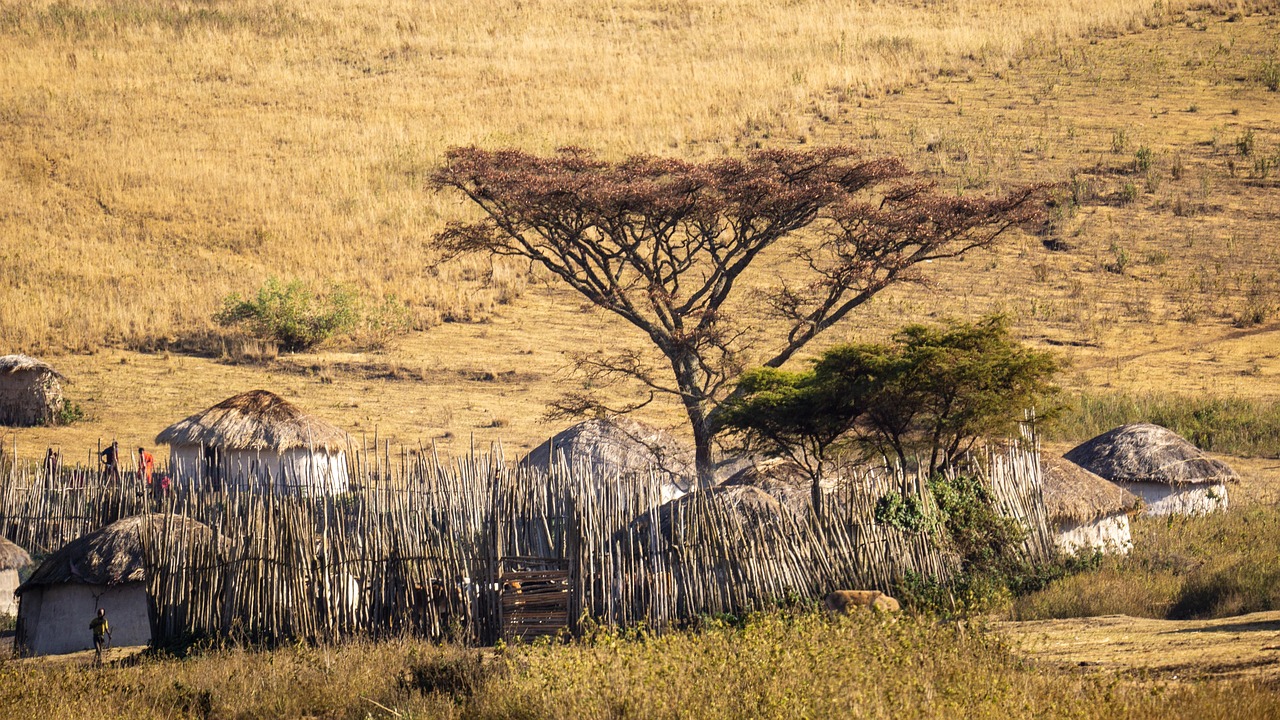Living with the Maasai: A Cultural Journey
The Maasai people of Tanzania and Kenya represent one of Africa's most iconic and resilient cultures. Living in harmony with nature for centuries, their traditions, colorful attire, and deep connection to the land offer visitors a unique window into authentic African heritage.
The Maasai: Guardians of Tradition
The Maasai are a Nilotic ethnic group inhabiting northern, central, and southern Kenya and northern Tanzania. Known for their distinctive customs, dress, and warrior traditions, they have maintained much of their traditional way of life despite the pressures of modernization.

A traditional Maasai manyatta (village) showcasing their distinctive circular huts
Daily Life in a Maasai Village
Waking up in a Maasai village is an experience that connects you to the rhythms of nature. The day begins before sunrise, with the sound of cattle bells and the gentle hum of village life. Women start their daily tasks of milking cows, collecting firewood, and preparing meals, while men tend to the livestock.
The Manyatta: Traditional Maasai Homes
Maasai homes, called manyattas, are constructed using a framework of wooden poles, branches, grass, mud, and cow dung. These circular structures are designed to be easily dismantled and rebuilt as the community moves with their cattle in search of fresh grazing lands.
Clothing and Adornment
Maasai clothing is instantly recognizable with its bright red shukas (cloth wraps) and intricate beaded jewelry. Each color and pattern holds cultural significance, with red symbolizing bravery and strength, blue representing energy and the sky, and green representing the land and prosperity.
Maasai Traditions and Ceremonies
Maasai culture is rich with ceremonies that mark important life transitions and celebrate community bonds.
Key Maasai Ceremonies
- Eunoto: Coming-of-age ceremony for young warriors
- Emuratta: Circumcision ceremony marking transition to adulthood
- Enoto: Ceremony marking the end of warriorhood
- Olng'esherr: Meat-eating ceremony for warriors
The Warrior Tradition
Maasai warriors, or morans, are central to their culture. Young men undergo rigorous training and ceremonies to become warriors, learning traditional skills, cattle herding, and community protection. The distinctive jumping dance, or adumu, is performed by warriors to demonstrate strength and attract potential partners.
Beadwork and Artistry
Maasai beadwork is a highly skilled art form passed down through generations. Women create intricate jewelry and decorative items using colorful beads, each piece telling a story or representing social status, age, or marital status.
Living with the Maasai: A Personal Experience
During my stay in a Maasai village, I was struck by the warmth and hospitality of the community. Every morning, I joined the women in their daily routines, learning to milk cows and prepare traditional meals.
Learning Traditional Skills
I spent hours with village elders learning to make fire using traditional methods, craft simple tools, and understand the medicinal properties of local plants. These skills, honed over centuries, represent a deep understanding of the natural environment.
Sharing Stories Around the Fire
Evenings in the village were magical, with families gathering around communal fires to share stories, sing traditional songs, and pass down oral history. The rhythmic chanting and melodic voices created an atmosphere of community and connection.
Maasai and Wildlife Conservation
The Maasai have lived alongside wildlife for generations, developing a unique relationship with the animals that share their land. Their traditional grazing practices and seasonal movements have helped maintain the ecological balance of the savanna.
Traditional Knowledge
The Maasai possess extensive knowledge of animal behavior, migration patterns, and seasonal changes that has been invaluable for modern conservation efforts.
Sustainable Practices
Their nomadic lifestyle and traditional grazing methods have helped preserve the delicate balance of the savanna ecosystem for centuries.
Community Conservation
Many Maasai communities now participate in community-based conservation programs that benefit both wildlife and local people.
Challenges and the Future
Like many traditional cultures, the Maasai face challenges from climate change, land pressure, and the desire of younger generations to embrace modern opportunities while preserving their heritage.
However, there's a growing movement to preserve Maasai culture through cultural tourism, traditional craft sales, and educational programs that share their wisdom with the world.
Experiencing Maasai Culture Responsibly
When visiting Maasai communities, it's essential to do so respectfully and responsibly. Nature Warriors African Safaris works with local Maasai communities to create authentic cultural experiences that benefit both visitors and hosts.
Our cultural tours include:
- Village Homestays: Live with Maasai families in traditional manyattas
- Cultural Workshops: Learn traditional skills like beadwork and fire-making
- Traditional Ceremonies: Witness authentic cultural celebrations
- Community Projects: Participate in initiatives that support local development
Living with the Maasai offers more than just a cultural experience—it provides a profound understanding of how humans can live in harmony with nature while maintaining rich traditions and strong community bonds. It's a journey that will change how you see the world and your place in it.
